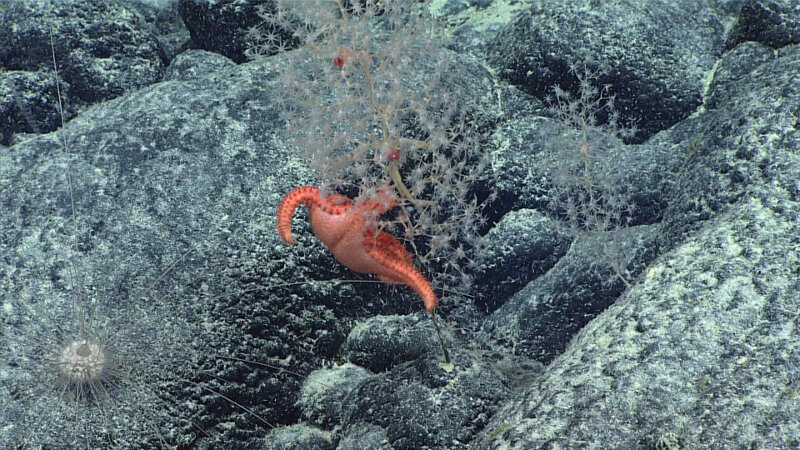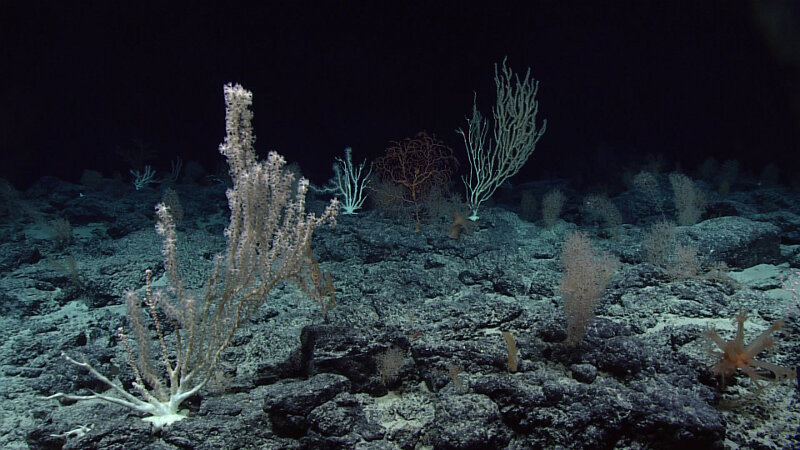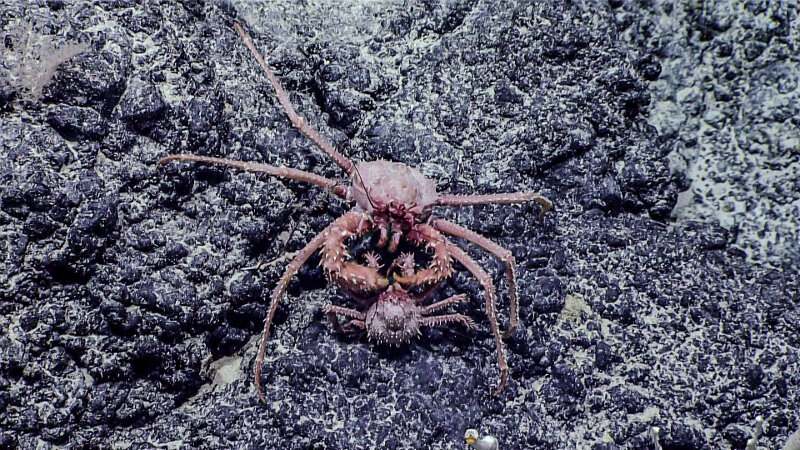-

Our science team is always excited about acts of predation when exploring the deep sea! Aside from learning more about the behaviors and associations of the organisms observed, these sorts of predation events were rarely documented prior to the beginning of NOAA’s Campaign to Address Pacific monument Science, Technology, and Ocean NEeds (CAPSTONE) in 2015. Image courtesy of the NOAA Office of Ocean Exploration and Research, Deep-Sea Symphony: Exploring the Musicians Seamounts. Download larger version (jpg, 1.8 MB).
-

Dive 08 revealed another high-density deep-sea coral community at Wagner Seamount. Image courtesy of the NOAA Office of Ocean Exploration and Research, Deep-Sea Symphony: Exploring the Musicians Seamounts. Download larger version (jpg, 1.4 MB).
-

This pair took our science team by surprise. These two Paralomis crabs appear to be in a delicate mating dance. Image courtesy of the NOAA Office of Ocean Exploration and Research, Deep-Sea Symphony: Exploring the Musicians Seamounts. Download larger version (jpg, 3.0 MB).